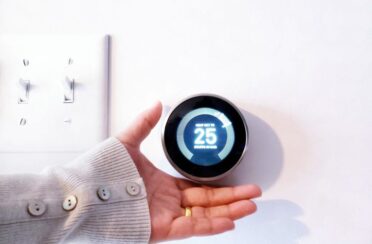 In most North American homes, the heating and cooling (HVAC) components are interconnected into one system. Some parts of that system are at work year round to provide comfortable and efficient heating and cooling. Learn how HVAC system components work together.
In most North American homes, the heating and cooling (HVAC) components are interconnected into one system. Some parts of that system are at work year round to provide comfortable and efficient heating and cooling. Learn how HVAC system components work together.
Heating
Most homes are heated (and cooled) with a forced-air system, usually with a combustion furnace. A powerful fan draws air into the furnace where burner flames heat the air before the fan blows the warm air into ducts that circulate it throughout the house. The warm air emerges from heating registers in rooms. At the same time, air is drawn into return registers placed strategically throughout the house, and funneled through ductwork back to the furnace where it’s reheated.
Cooling
In homes with furnace systems, the A/C’s inside unit, the evaporator, is typically connected to the furnace near the duct connection. In the summer, refrigerant in the evaporator coil absorbs heat from the inside air, a heat-exchange process that creates cool, conditioned air. As with the warmed air in the winter, a fan circulates the cooled air through ducts and registers.
Working Together
For both effective heating and cooling, the furnace blower should be kept in good working condition with regular maintenance. Whether you’re using a furnace or A/C, the air filter needs to be inspected regularly and replaced when it gets clogged with dust. Ductwork usually works year round, carrying either cool or warm air. As a result, proper duct maintenance and sealing is essential for both heating and cooling.
For more help understanding how HVAC system components work together to make your Calgary area home comfortable year-round, contact us at Arpi’s Industries.
Our goal is to help educate our customers in Calgary, Alberta about energy and home comfort issues (specific to HVAC systems). For more information about HVAC components and other HVAC topics, download our free Home Comfort Guide.
Credit/Copyright Attribution: “Ioannis/Shutterstock”


